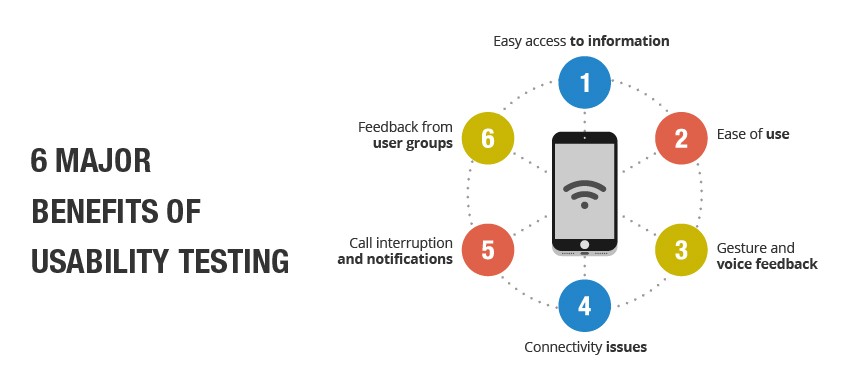
Internet of Things (IoT) is changing the lives of consumers at many levels. From smartwatches and fitness trackers to connected cars and homes, the market for wearable technology is expanding and finding new niches.
Contents
- Role of Usability Testing
- Why is Usability Testing Critical?
- Reasons Why Usability Testing Cannot Be Ignored
- Conclusion
Role of Usability Testing
According to a report by industry analyst firm CCS insights, there will be a growth of $25 billion by 2019 for the wearables market, and over 125 million units are expected to ship in 2019.
While the above statistics make a strong point that wearables and smart devices will be the future and the world will be using these devices to perform daily activities., there is an extensive need to double down testing efforts.
The race to become an ideal choice for customers is pressuring enterprises across all business domains. In particular, with user experience, every brand is building strategies to ensure better customer experience. Considering the focus that is on strengthening their digital impact, every brand/service/product is striving to come up with appealing website designs and mobile-based applications.
Those winning brands in the wearable tech ecosystem recognize the importance of customer experience for the growth of their product. Every day, there is a new competition in the wearables space. From watches to glasses, different challenges are involved with every technology. However, the main challenge faced by the wearables industry is to ensure the best user experience.
Why is Usability Testing Critical?
Usability Testing identifies crucial usability issues before the product is launched. It helps determine the usability standards for the target audience. It also helps to gather real-time feedback from the target audience using an application. Usability Testing of apps has proven to decrease support costs, increase user satisfaction, and save big on development and redesign costs.
Reasons Why Usability Testing Cannot Be Ignored
1. Easy access to information
Wearables gather information such as the number of steps taken, miles covered, track heartbeat of a user and more. Usability Testing ensures the data captured by these devices is easily accessible and displayed to users clearly.
2. Ease of use
Wearable devices provide ease to people who want to track their movements. If the device is not easily accessible and is complex, it is obvious that its market would be limited after receiving initial feedback from the users. The device should be easy to use and should be aesthetically attractive. Usability Testing considers various aspects to check if the device is user-friendly and is appealing to the customers or not. Some aspects are:
– Screen Size
– Font Size
– Colors Used
– Touch Panel
– Easy Scroll
3. Gesture and voice feedback
Wearables are on the users’ body constantly, and people move in unanticipated ways. What happens when a hello wave interrupts tracking or switches a smart device from ambient to interactive mode? Device input discrepancies could be the make it or break it for a user. This is where Usability Testing comes into the picture as it checks the device for any struggle while registering the different tones of voice.
4. Call interruption and notifications
As wearables sync to mobile devices, but do not necessarily have all the functions of a mobile, disturbances like notifications and calls can interrupt or even ruin the user. Helped by Interrupt Testing (a part of usability testing), it can be validated that the calls or notifications do not interrupt the functioning of the device.
5. Connectivity issues
Most wearables connect to the phone via Bluetooth, which makes Bluetooth connectivity the most important thing to test as connectivity issues can annoy even the techiest of users. Usability Testing ensures that setting up wearable device connectivity with mobile is easy and doable without toiling much.
6. Feedback from user groups
Usability testing involves real-time usage of the device to get candid feedback of the users. It is essential to discover defects and errors that are unknown and can arise when a user is using the device.
Conclusion
Wearable technology market is emerging, and the demand is likely to rise in future. Therefore, to attract more consumers, smart technology is required. However, the interface being offered should be easy to use. To deliver a consistent, seamless and high-quality experience for users, wearables should be thoroughly tested.
To ensure Quality is no more a concern, outsourcing QA to a third-party organization with the right expertise can be your best choice. At TestingXperts, our focus is to keep your applications secure and achieve customers’ satisfaction. Connect with us today for more information on our Quality Assurance and Software Testing services.
Discover more
Get in Touch
Stay Updated
Subscribe for more info






